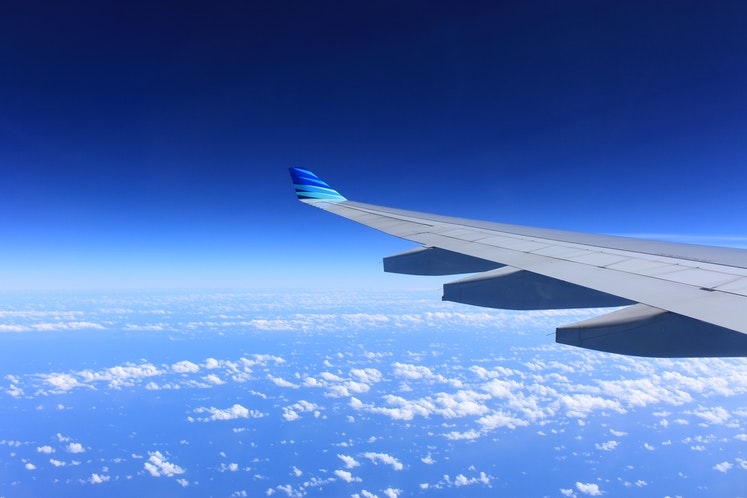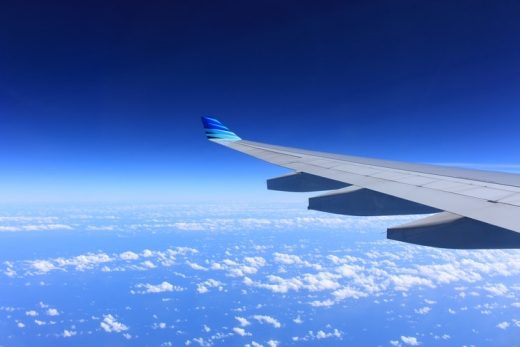Air Travel is Far Safer Than You Think: Here’s Why
Air Travel is Far Safer Than You Think: Here’s Why

Very few people are afraid of traveling by car, while millions of Americans are afraid of flying. But would you be surprised to learn that air travel is actually far safer than driving down the interstate?
Here’s What the Numbers Say
You’ve seen plenty of movies with airplane crashes. Films like United 93, We Are Marshall, Air Force One, Die Hard 2, Con Air, and Snakes on a Plane come to mind – and there are dozens more. But don’t let Hollywood convince you that flying is unsafe. The reality is that air travel is far safer and more efficient than any other mode of transportation on the planet.
In 2016, 325 people died in 19 airplane crashes worldwide. On its surface, this might seem like an alarming statistic. But when you consider that there are more than 3.5 billion air passengers, it becomes evident just how minimal the risk truly is.
For starters, it’s highly unlikely that you’ll ever be involved in an airplane crash (or know anyone who is ever in a crash. As Bowman points out, the odds of a plane crash are one for every 1.2 million flights. But even if you are unlikely to be on that one-in-a-million flight, death isn’t a likely outcome.
“Even if you’re reading this on an airplane while you’re rocketing toward the ground, your odds of surviving are quite good,” Bowman notes. “Among passengers aboard crashed planes, 95.7 percent survive. And according to the National Transportation Safety Board, even passengers of the most devastating airplane crashes survive at a rate of 76 percent.”
Only one out of every 11 million people will be in a plane crash in their lifetime. Dying in a plane crash is so unlikely that you’re far more likely to:
- Be born with an extra finger or toe (1 in 500)
- Get killed by a meteorite (1 in 700,000)
- Drown in your bathtub (1 in 840,000)
- Be murdered (1 in 18,000)
If you’re flying commercial – which most people do – you’re even less likely to be killed in an airplane accident than someone who is traveling in a private plane.
In other words, you probably aren’t going to be involved in an airplane crash. And if you are, your odds of survival are pretty good. That’s just what the data shows. You can trust the numbers, or rely on Hollywood. And it seems like the first option is a bit more reliable.
5 Reasons Airplanes are Incredibly Safe
The data clearly shows that airline travel is safe, but why? On the surface, the idea of sending 450 tons of steel rocketing through the air at an altitude of 30,000 miles and speed of 550 miles seems like a recipe for disaster. Why, then, are there so few crashes and deaths?
The safety of air travel comes down to several factors. The more you understand them, the less fearful you’ll be. So let’s go ahead and explore some of the top reasons why airplanes are so safe:
1. Flight Critical Systems are Protected
There are more than 100,000 commercial flights every single day. This means airplanes are regularly placed within range of lighting strikes, pressure changes, moisture, environmental hazards, and even electromagnetic fields. Despite the frequency of bad weather and other uncontrollable factors in the sky, air travel remains safe. How could this be?
One answer is that flight-critical systems on commercial aircraft – such as electronic engine and flight controls – are protected against lightning strikes and extreme pressure. They’re protected by shielded wiring and shielded enclosures that are strategically grounded to the aircraft.
Over the past few decades, aircraft operators have relied on loop resistance tester (LRT) technology to test their shielding systems. In recent months, updates to LRT technology has reduced operators’ maintenance time and improved accuracy. As a result, it’s easier to ensure critical flight systems are protected and functional. Thus, if something were to happen in the air, it’s unlikely that serious damage would be inflicted.
2. Improvements in Air Traffic Control Technology
Even outside of the airplane, there are new technologies and mechanisms making air travel safer for pilots and passengers alike. While air traffic control has always played a role in directing the flights through the sky, advances in technology mean air traffic control agents have more insights and visibility into what’s happening around them.
Just ten years ago, air traffic controllers had to rely heavily on earth-based navigation systems. These systems restricted aircraft to very specific routes and altitudes, which was somewhat inconvenient (and not very efficient). Today, advances in GPS technology give controllers more accurate, real-time information on airplane locations. Not only does this permit faster travel and more efficient routes, but it also enhances safety and reduces the likelihood of airplane collisions and/or confusion on takeoff and landing.
In addition to avoiding collisions, advanced air traffic control systems make it easier to identify and dodge inclement weather. In addition to protecting the aircraft, this significantly shortens the delays that passengers would otherwise experience.
3. Better Crashworthiness
In 1917, a young pilot by the name of Hugh DeHaven had his plane collide with another plane during his final training flight for the Canadian Royal Flying Corps. While he survived the 500-foot free fall to the ground, the pilot of the other plane did not.
DeHaven was so impacted by the crash that he would go on to devote much of his professional life to studying what he called the “crashworthiness” of planes. He used specially designed crash dummies to advocate for better seat belts and safer cabins to protect passengers in the event of an accident.
By the time DeHaven retired in the 1950s, great strides had been taken to improve safety. And over the past 70 years, even more improvements have been made.
Seat belts are stronger than ever before, while airplane seats themselves are also stronger and more secure than they’ve been in the past. Ideas like seat cushions that double as floatation devices, oxygen masks that drop from the ceiling, emergency escapes, inflatable slides and rafts, and other advances all combine to make survival more likely than it was just 20 or 25 years ago.
4. New Pilot Protocols
Advances in aircraft technology have certainly made planes safer, but it’s not all technical. There’s also a close correlation between air travel safety and an emphasis on new pilot protocols.
In the aftermath of tragic events in 2014, the FAA put new rules into place that limit the amount of time pilots can spend in the cockpit, as well as the amount of rest they must receive between shifts. The rules state that pilots must get at least 10 hours off prior to flight duty, with eight of these hours being devoted to sleep.
Then there’s the “rule of two,” which was introduced after the tragedies on September 11, 2001. As the name suggests, the rule requires at least two people to always be present in the cockpit at any given time. If one of the two pilots must leave for a period of time, another crewmember – typically a flight attendant – must be summoned.
Pilots also have increased freedom to call out other pilots for unsafe behaviors. If, for example, one pilot believes his co-pilot is under the influence of alcohol, he has the right to demand a breathalyzer.
The rigor of pilot training has also been enhanced over the years. Today’s flight simulators are far more realistic and involved than the past. A pilot can learn how to fly a plane without ever leaving the ground. This ensures no passenger is ever subjected to an inexperienced pilot in the cockpit.
5. More Safety Audits
It used to take a crash or major accident for airlines to audit their safety procedures and protocol. Today, the availability of data makes it possible to conduct audits much more frequently.
“The integration of data-driven programs to boost safety and a focus on proactively targeting safety management has triggered a greater awareness in the airline industry,” Weiss notes.
Over the past few years, there’s been far more collaboration between the industry and the International Air Transport Association (IATA). In particular, more airlines are focusing on the IATA Operational Safety Audit, which develops and executes various standardized practices aimed at enhancing safety.
Only Getting Safer
Air travel is becoming safer by the year. In 1970, there were 298 crashes resulting in 2,226 deaths. In 2017, there were just 101 incidents resulting in 399 deaths. Not only is this a steep decline crashes and deaths, but it comes as the number of flights and passengers have continued to increase on a year-by-year basis.
Hollywood films like to tell tales of airplane crashes because they know how enamored audiences are with the topic. But fear of dying in a plane crash is irrational. It’s the safest way to travel in the world – and it’s only getting safer!
The post Air Travel is Far Safer Than You Think: Here’s Why appeared first on ReadWrite.
(28)


